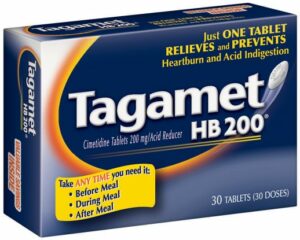Parathyroid hormone (PTH) related peptide (PTHrP) is thought to influence the proliferation and differentiation of the epidermis and hair follicle. As a means of elucidating the biologic function of PTHrP on the hair follicle, a PTHrP analog PTH (7-34), which is a PTH/PTHrP receptor antagonist, was given intraperitoneally twice daily to C57 BL/6 mice at different stages of the hair cycle. PTH (7-34) induced 99 ± 4.5% (mean ± SEM) of resting telogen hair follicles into a proliferative (anagen) state, whereas 100% of the hair follicles in the control group remained in telogen. To determine whether this peptide influenced the progression of the hair follicles from anagen to catagen (hair follicle maturation and regression), groups of mice that were either spontaneously in or induced to anagen received either PTH (7-34) or placebo. Morphometric analysis of the hair follicles from the middle back region of the spontaneous anagen mice that received PTH (7-34) revealed that 19 ± 4% (mean ± SEM) of the follicles were in anagen VI, whereas None (0%) were in anagen in the control group. Similarly, in induced anagen mice treated with PTH (7-34), 22.3 ± 1.4 (mean ± SEM) of the follicles were in anagen VI compared to only 1.3 ± 0.7% in the control mice. Together these observations suggest that PTHrP is a hair follicle morphogen that may be a major factor responsible for controlling the hair cycle. These studies provide a new insight for development of PTHrP analogs for a wide variety of disorders related to disturbances of hair cycling. Key words: parathyroid hormone related peptide/mice/hair cycle/anagen. J Invest Dermatol 108:928-932, 1997
Parathyroid hormone (PTH)-related peptide (PTHrP) is a 141-amino acid protein that shares 70% homology with PTH in its first 13 amino acids but diverges completely in its primary structure thereafter (Broadus et al, 1988; Thiede et al, 1988; Orloffrt al, 1994; Martin et al, 1991). Studies using synthetic PTH and PTHrP amino-terminal fragments have demonstrated that these peptides bind to the PTH receptor and cause biologic effects on calcium and phosphorus metabolism. A PTH/PTHrP receptor has been cloned, and it has been demonstrated that PTH/PTHrP mRNAs are widely expressed in many tissues unrelated to calcium metabolism, including the skin (Juppner et al, 1991; Urena et al, 1993). PTHrP is similarly expressed in several normal and neoplastic tissues, including skin and hair follicles (Merendino et al, 1986; Hayman et al, 1989; Arillasoy, 1991). Although the physiologic role of PTHrP in the skin is not well understood, mounting evidence suggests that this peptide plays an important role in epidermal proliferation and differentiation1,2 (Henderson et al, 1992; Kaiser et al, 1992). The PTH/PTHrP receptor agonist PTH (1-34) was found to inhibit epidermal proliferation in cultured human keratinocytes (Holick et al, 1994), and in vivo in SKH-I hairless mice (Holick et al, 1994). Evidence that this effect was mediated through the PTH/PTHrP receptor was provided by studies in which the addition of the PTH/PTHrP receptor antagonist, PTH (7-34) reversed the PTH (l-34)-induced anti-proliferative effect on cultured keratinocytes1 (Holick et al, 1994). In vivo PTH (7-34) stimulated, in a dose-dependent fashion, [3H]thymidine incorporation into the epidermis. Furthermore, PTH (7-34) increased the total number of visible hair shafts and hair length by 146% and 80%, respectively (Holick et al, 1994). To further investigate the biologic function of PTHrP as a possible regulator of hair growth, we investigated the effect of its antagonist PTH (7—3 4) on the cyclic growth and regression of hair follicles in mice with normal hair growth using the C57 BL/6 mouse model for hair research (Paus et al, 1990, 1994a, 1994b, 1994c).
MATERIALS AND METHODS
C57 BL/6 mice were purchased from Charles River Breeding Laboratories (Wilmington, MA) and fed a standard mouse chow diet ad libitum. [Nle8,18Tyr34] parathyroid hormone (7-34)-amide [PTH (7—34)] was purchased from Bachem California (Torrance, CA). Two groups of six to seven telogen 24-d-old C57 BL/6 mice were given either 1 µg of PTH (7-34) in 0.1 ml of distilled water or 0.1 ml of distilled water twice daily interperitoneally for 14 d. The skin color for the mice in each group was evaluated on day 12, 13, and 14 of treatment as previously described (Paus et al, 1990,
Manuscript received April 8, 1996; revised February 18, 1997; accepted for publication February 28, 1997.
Reprint requests to: Michael F. Holick, Ph.D.. M.D., 80 East Concord Street, Boston University Medical Center, M1013, Boston, MA 02118.
Abbreviations: PTH, parathyroid hormone; PTHrP, parathyroid hormone related peptide, PTH (7—34), parathyroid hormone (7—34).
1 Holick MF, Nussbaum S, Persons KS: PTH-like humoral hypercalcemia factor (HHF) of malignancy may be an epidermal differentiation factor: synthetic hHHF(l—34)NH^ inhibits proliferation and induces terminal differentiation of cultured human keratmocytes.J Bone Miner Res 3:S214, 1988 (abstr).
2 Milstone L, Fairley J, Insogna K, Stewart A. Reuveni H: Parathyroid hormone-like peptides increase intracellular calcium and differentiation of keratinocytes.J Cell Biol 107:73A, 1988 (abstr).
Marcus B. Schilli,*t Swapna Ray,* RalfPaus,t Eliot Obi-Tabot,* and Michael F. Holick*
* Vitamin D, Skill and Bone Research Laboratory, Endocrine Section, Department of Medicine, Boston University Medical Center, Boston, Massachusetts, U.S.A.; and ^Department of Dermatology, Charite Hospital, Humboldt-Universitat. Berlin, Germany
Continue to Page 2





